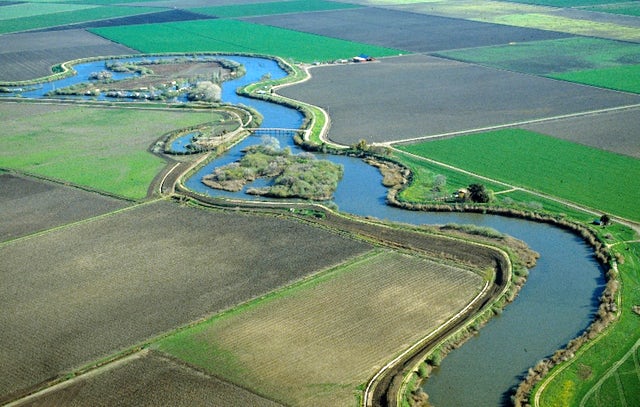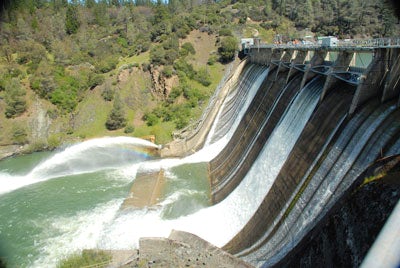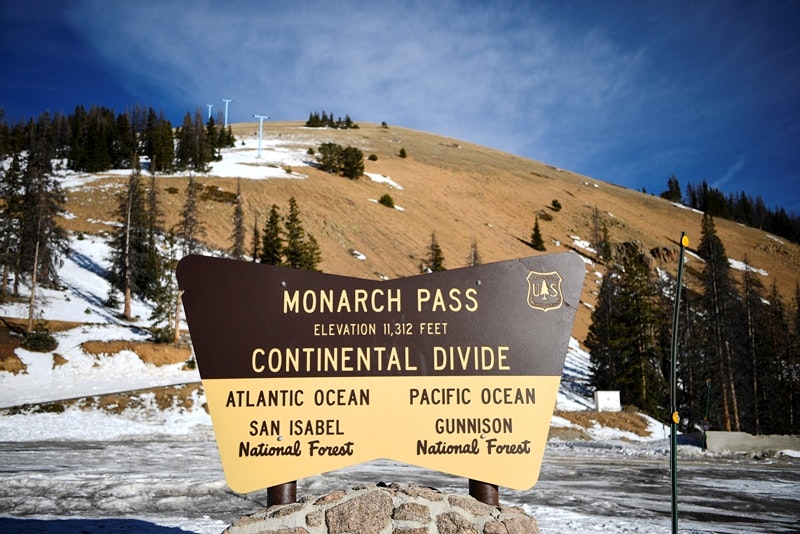From Sportfishing
Fish Report for 2-20-2018

Drought Conditions Spread Across the West – Are We Ready?
2-20-2018
Alastair Bland
Concerning forecasts for runoff into the Rio Grande and the Colorado River are just the start of the bad news for the West as California and other southwestern states face warm weather, below average precipitation and paltry snowpack.
THE DRIEST DECEMBER in California’s recorded history was followed by a relieving gush of rain in January, when it seemed there was a chance the state would be on track to receive at least its average level of precipitation.
Now, shortly after a record-breaking midwinter heatwave and seemingly endless blue skies, general optimism is waning as February shapes up to be even drier than December, despite a soaking Los Angeles received on Monday. A formidable high-pressure ridge has settled off the West Coast, deflecting storms northward in much the same pattern observed in 2013, 2014 and 2015, and though scientists and policy experts debate the definition of “drought,” few would disagree that the American West is in the grip of another extraordinary dry spell.
According to the U.S. Drought Monitor, most of California is either abnormally dry or experiencing drought, and about two-thirds of Arizona and three-fourths of New Mexico are facing severe or extreme drought. The Rio Grande, a major water source for much of the Southwest, contains just half the water it did during recent drought years. Currently, the rate of flow at the Otowi Bridge in New Mexico is 21 percent of average – what hydrologists say could be the lowest such reading in 70 years.
“The river is going to be critically dry this year,” said Jen Pelz, WildEarth Guardians’ wild rivers program director and a specialist in Rio Grande hydrology.
She said that according to current projections, most of the Rio Grande downstream of Colorado is likely to be running at a trickle of less than 100 cubic feet (2.8 cubic meters) per second. Such conditions are likely to devastate the Rio Grande silvery minnow, an endangered species that occurs in a 174-mile (280-km) length of the lower river in New Mexico. The fish lives a lifespan of just two years, which means multiple years in a row of poor conditions can have serious population impacts. Pelz said the silvery minnow’s numbers spiked after 2017’s abundant precipitation.
“The population bloomed, and this year virtually all of them could die,” said Pelz, who noted that a handful of other birds and fishes will be imperiled by a dry winter.
If relief for the ecosystem doesn’t come from Pacific Ocean storms, it isn’t likely to arrive from the mountains where the Rio Grande begins, either.
“We would need to get so much snow in the next two months to get to just half of normal,” Pelz said.
At most survey sites in New Mexico and southern Colorado, snowpack levels were recently logged at less than 25 percent of average. Angus Goodbody, a forecast hydrologist with the U.S. Department of Agriculture’s National Water and Climate Center, said many sites are at 30-year lows. At several stations, he said, there hasn’t been so little snow in 50 to 80 years. Winter and spring storms, as well as summer monsoons, could give a boost to the Rio Grande, though the odds of such relief seem low.
“If things remain dry, a record-low runoff year is nearly assured,” Goodbody said.
Throughout the Rocky Mountain headwaters of the Colorado River, snowpack levels are 67 percent of the 1980-to-2010 median.
“That’s really, really low,” said Jennifer Pitt, director of the National Audubon Society’s Colorado River program.
Unusually high temperatures and dry air, Pitt said, could make things worse by turning what little snow there is directly into water vapor rather than melting it.
“When that happens, what looks like will be a drier-than-average year can quickly become a very dry year,” she said.
The reservoirs of the Colorado River are seriously depleted, with Lake Powell just 56 percent full and Lake Mead 41 percent full. Pitt said Lake Mead’s surface elevation has rarely been so low since the reservoir was first filling with water during World War II.
In California, there is scarcely more, if any, snow blanketing the mountains than there was in 2015, when climate scientists concluded the season’s threadbare mountains were covered with the wispiest snowpack in 500 years. Currently, the central Sierra Nevada snowpack is 24 percent of average. In the Trinity Alps in the north and the southern Sierra Nevada, the snowpack is 17 percent of average.
“Fortunately, our reservoirs are in pretty good shape,” said Jay Lund, director of the University of California, Davis Center for Watershed Sciences. Lake Shasta, the state’s biggest reservoir, is three-fourths full.
“But forests don’t see a benefit from full reservoirs,” Lund said. “People do, and so do farmers, and sometimes fish – but not forests.”
He expects many more trees to perish in the state’s inland mountains, where more than 129 million trees – mostly conifers – have died since 2010. This will mean still more fuel for wildfires, which caused severe destruction in 2017 in spite of a very wet winter and spring.
“Fires are my biggest environmental concern,” Lund said. “It’s hard to know what to do about it except to be prepared.”
As the dry winter proceeds, Lund said the chances of a normal water year diminish.
“March would have to be incredibly wet to get us out of this hole,” he said.
However, Lund said the first year of a drought is generally relatively easy to manage, thanks to high reservoir levels.
“It’s the second, third and fourth years of drought that become more difficult,” he said.
Correction: This story has been updated to reflect that Lake Mead’s surface elevation is not the lowest since it first filled but has rarely been so low.
Alastair Bland is a freelance journalist in San Francisco, CA. He can be reached at allybland79@gmail.com or via Twitter.
Photos
< Previous Report Next Report >
More Reports

2-12-2018
California and other Western states will be grappling with long-term water issues related to infrastructure, clean drinking water systems and...... Read More
Diverted River Sustains California Wine Country, but It’s Killing Salmon
Eel River - South Fork
2-7-2018
[Utility PG&E’s Potter Valley Project includes two dams on the Eel River that are up for relicensing. Water diversions into the...... Read More

Website Hosting and Design provided by TECK.net
